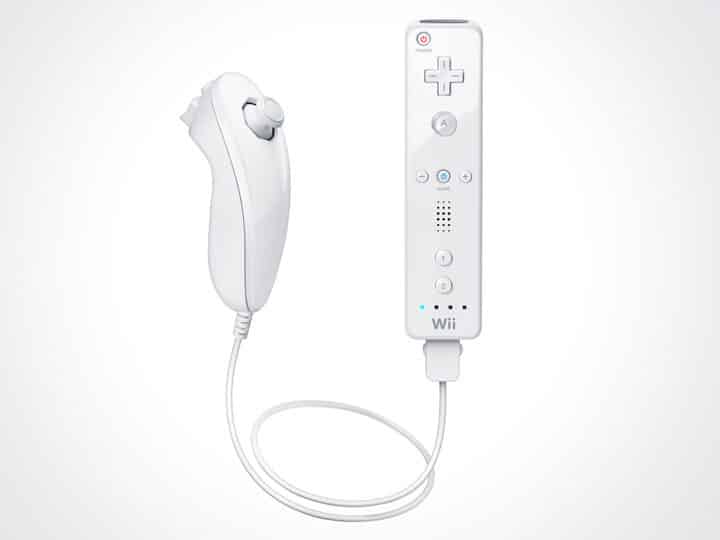In the past, many game console companies have been experimenting with different types of controllers for their consoles. The Nintendo Wii, although outdated now, produced the most promising motion sensor controller. They took the primitive, clunky technology of their previous motion sensing controller; the Powerglove, and made it slightly less primitive and clunky... Slightly. I would say the latest contender for this kind of technology is with the company 'Razer', who have better utilized the idea with their Hydra. Although some say it's just as bad.
Wii Remote (left) Razor Hydra (Right)
The problems with the Wii remote, similar to the Hydra, were that the responsiveness was very hit and miss; which made games such as Wii Boxing extremely frustrating. As a matter of fact, I can remember several times when I would be playing Wii Boxing and throwing my fists out desperately whilst my Mii (avatar) would keep his fists pressed to his chest and simply lurch forward.
Shortly after the Wii was released Microsoft decided that it needed to compete with Nintendo's motion sensor technologies, and so the Kinect was developed for the XBox. The Kinect was a motion sensor device that allowed the player to interact with games without the aid of a controller. It also taught the games industry a valuable lesson: games need controllers!
The problem with XBox Kinect was pretty similar to the problem with the Wii remote: a severe lack of responsiveness. If a controller only responds half the time; the game is essentially unplayable. At least with the Wii remote and Nunchuck there were buttons and a thumb stick which the player could use to reliably perform certain tasks in the games they were playing. Whereas with the Kinect, the motion sensor was all the player had. This made even the simplest of tasks; such as navigating a menu, seem pointlessly difficult.
I can see why games companies tried to push the use of motion sensor technology; the idea of physically acting out a video game does sound a lot more engaging than simply sitting on a couch with a hunk of plastic covered in buttons in your lap. But the simple truth is that the technology is not nearly advanced enough yet for motion sensor technology to work reliably in games. Admittedly though, once you get past the motion sickness, the Occulus Rift has been a great success, in terms of allowing further immersion into a game environment. However, even that needs some kind of better developed motion sensor equipment to make your immersion more believable. Otherwise your head is immersed but your legs are stationary and your hands are glued to a controller or keyboard still.
As we can see above looking back through the history of game consoles, the two handed controller has been around for decades, and Console companies have spent a lot of money on refining their designs; trying to make them as ergonomic as possible. An ergonomic design is crucial for gaming controllers for several reasons: one; if a controller is so uncomfortable to hold that the player can only use it for so long before their hands ache, the controller and any other components that come with it (i.e. the console) are unlikely to sell all that well. Another issue with an uncomfortable controller is that it could cause repetitive strain in the hands which, if severe enough, could result in a lawsuit against the company.
An awkwardly designed controller can cause not only wrist/ hand pain, but can also make games more difficult to play.
A good example of this is the Atari 5200 controller (Above). It's design was so poor that it made games such as Pitfall Harry essentially unplayable. Not to mention the fact that the materials that were used in the controller were so cheap and brittle, that the controller would degrade extremely quickly; buttons crumbled, the casing cracked easily, and the joystick didn't center itself when released. After reading about controllers such as the 5200, it's easy to see why Atari went bankrupt. So in conclusion, nothing I've seen produced so far can match a standard ergonomic controller, as it's always been the key to easy, reliable interactivity. Granted their is equiptment starting to arise now such as the Occulus, that allows for further emersion of the senses, but nothing that has conquered them all.







No comments:
Post a Comment